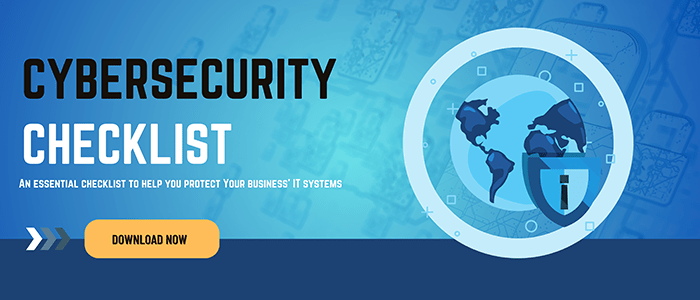End-User Training

Summary: It’s common to outsource IT services, but there are numerous everyday issues that your employees can handle on their own. Lonnie Cherry, Senior Technical Engineer at PCG, talks about how to train employees so you’re not racking up IT bills. Listen or read more to find out about end-use training.
John Maher: Hi, I’m John Maher, and I’m here today with Lonnie Cherry, Senior Technical Engineer at PCG, a managed service and IT provider with headquarters in Portsmouth, New Hampshire and locations in Dover, Manchester, and Portland, Maine. Today we’re talking about end-user training. Welcome, Lonnie.
Lonnie Cherry: Thank you, John.
John: So, Lonnie, what is the importance of end-user training and what is that?
Lonnie: Yeah. Basically, the real big importance about end-user training is keeping your end-users informed of some of the things that are going on in the industry. Also, keeping them trained on their tool set of applications that they’re utilizing within their company, helping them be more productive, and basically overall help them with their user experience.
Helping Teams Navigate Challenges on Their Own
John: So, are you trying to avoid having one of your clients just be like constantly giving you a call because they don’t understand how to do this or how to do that and using their . . . “How do I use my computer?” Is that sort of the idea? I mean, but obviously it’s for the benefit of the company as well in terms of production that they’re not losing hours of time because an employee doesn’t know how to use their computer.
Lonnie: Absolutely. It’s a win-win for both of us. We’re trying to basically keep them informed of some of the stuff that’s going on in the industry. We’re also trying to keep them a little bit more productive. Yes, we are actually trying to keep the noise down because in a lot of cases, some of these items are billable items for our clients, so we want to make sure that we’re not just getting constant noise from them always having, “I can’t do this, I can’t do that, or this isn’t working.” A lot of it has to do with training a lot of times because they just don’t know what they’re doing. So, before they travel down a road where they cause more harm than good, we want to make sure that they’re fully aware of what they’re doing and how to utilize those tools.
Outsourced Managed IT and Training
John: Right. So, if you’re doing managed IT for a company and they get a certain number of minutes or hours in a month that they’re able to call for support, it’s not in their best interest to be constantly on the phone with you because then they’re going to be maybe racking up some bills for their company and-
Lonnie: Racking up bills, and then depending on how busy we are, they could potentially be waiting for something that if maybe they were trained properly, they could have taken care of their self.
John: Right. So, what are some of the things that you offer and do user training on?
Lonnie: We offer end-user training on Office 365. We offer security training for clients who want to secure their networks a little bit better and want to basically train their end-using staff on how not to do certain things when they get maybe a bogus email or maybe they receive something else or they’re surfing the internet, and they want to keep their clients and keep their network say from potential hacking and malware and ransomware viruses and so on and so forth.
John: That’s interesting. So, just general security issues and making sure that employees know how to avoid phishing scams and things like that because something like that, if they make a mistake, could take a whole network down or really cause some problems for a company.
Lonnie: Absolutely. We talk about the security tools that are out there to help thwart those kind of problems, but we rarely talk about how do we train our clients not to put themselves in those predicaments, and security training in itself for the end-users is very important. We have tools to train them, but we also have training to train them, things that they can potentially do to keep themselves safe. We go through all that in those security trainings.
John: Okay. And you mentioned that you also do training on things like operating systems. That would be like how to use Windows 10 maybe. Maybe people are transitioning from Windows 7 to Windows 10, and it’s a little bit different, so maybe you need to tell them a little bit about, “Hey, this is how you do this now. This is how you do this now.” That kind of thing.
Lonnie: Absolutely. One of the biggest issues we have is when Microsoft decides that, “Hey, we’re going to put out a new operating system.” At first, you get a lot of people who are, “I’m not changing.” But, unfortunately like everything, Microsoft decides, “Hey, we’re not going to support that previous operating system anymore.” So, that’s another huge one. Learn the new operating system. We’re here to show you that. We work in these new environments all the time, so sometimes it’s easy as they just tweaked this, they just tweaked that, not that bad. Sometimes, we have users who are less knowledgeable and need a little bit more of education training.
Common Office 365 Issues
John: Right, right. And then things like Office 365 that can deal with both your Office products like Word and Excel and Outlook, but it also has to do with your whole email system. What are some of the issues with Office 365 that you get into in terms of training?
Lonnie: So, the primary suite of Office 365 is always been pretty much a big training thing for us. The Word, the Excel, the PowerPoints and stuff and so on and so forth. Outlook is another big one. There’s so much in Outlook that people just don’t know about, setting calendar appointments, how do I put a read receipt on my email, so on and so forth, but now that Microsoft’s primary focus is Office 365, there’s a whole other suite of tools out there, one of those being Teams. Teams is the new chat and messaging product. It used to be called Skype for Business. Well, Skype for Business is still out there, but they’re getting ready to phase that away. So, people just don’t know quite how to use that yet. It has so many working parts to it, so —
John: And it might be a whole new system for people where they’re used to just using email to. Like, I want to ask one of my coworkers a question, and I’ll send them an email, but they’re not used to that whole system of like, “Maybe I’ll save that and not send them an email, and I’ll just chat with them and get a quick answer right back.”
Lonnie: Absolutely. They’ve taken some of the other suites of products that they’ve had, and they’ve kind of melded into this thing called Teams, so there are going to be a lot of users out there who are going to need training on that.
One of the other items out there right now is OneDrive. It’s where you can store your documents. It’s kind of like Dropbox. That’s another one that people just don’t quite understand, and we see that product as being a product that potentially could replace file servers in the near future with everybody, and I know this is a separate subject, but everybody going to the cloud. OneDrive is one of those things that would help you in your drive to get to the Cloud.
John: Right, so that everybody doesn’t have all of their files on their own individual computers. Now it’s all in one place, and it’s in a safe place offsite, not in your company, so if there was ever a fire or something like that, all your data is safe.
Lonnie: Yeah, safe, secure. It’s also easily accessible from your mobile device, from your laptop, from your work computer. You can easily share those items with other people if you need to, so it’s important to get your user staff trained on how to use those tools so they’re not just creating things.
Somebody said to me, one of their popular sayings was garbage in, garbage out. You want to make sure that you keep those environments clean and that people can navigate in those areas, and that’s why training would be important on something like that.
John: And it’s different, and it’s a change for people who are used to for so many years just saving their file into their documents folder on their computer. It’s a little bit of a change to now say, “Okay, now you have to save it into the Cloud so that it’s accessible.” Maybe I have to specifically set it up so that it’s shareable with the other people on my team, et cetera.
Lonnie: Absolutely.
Onboarding New Employees
John: Yeah. Yeah. So, what happens when new employees come on? Because obviously, you go into a company, you can do all this training on security, on Office 365, on their operating system, Windows 10, whatever, and then all of a sudden they hire 10 new people. What do you do then?
Lonnie: What we like to try to do is some of the formats we do are recorded sessions kind of similar to what we’re doing here, provide them with maybe videos. We’ve done that before for one of our clients where we did some Outlook training because they were moving through Office 365, and we video recorded it so that they could show that to their new employees.
We also, when we give them some of our tool set, one of them is the document and password repository. We provide them with a SOP, standard operating procedure, on training so that they can see that information, too, if they need it. So, that would be if we did an Office 365 training, we copy down some notes, some screenshots, and so on and so forth and have that readily available for them to show to the new employees.
John: Right. So, when a new employee comes in, they can just immediately be shown “here’s the repository with all of the videos, watch all of these, here’s all the documents, read all of these” . . . and then they’re largely up to speed without having to go through a whole new training session with you.
Lonnie: Absolutely. Yeah. Fortunately, there’s a lot of younger staff coming out there, so they know how to use a lot of these tools, but, it’s always good to give a refresher training, so on and so forth.
John: Right. All right, that’s really great information, Lonnie. Thanks again for speaking with me today.
Lonnie: You’re welcome.
John: And for more information, visit the PCG website at PCGIT.com or call 603-431-4121.




